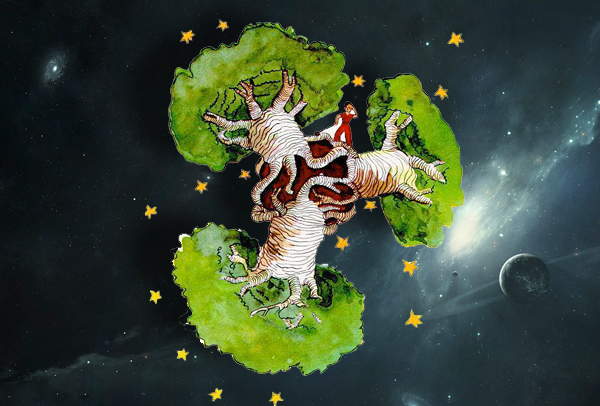 lecturesbureau.gr
lecturesbureau.gr| < A first likely option > |
| When I conceptualized my space biotop
in 2013, my
original motivation was to suggest a reasonable alternative to
non-realistic ambitions to send human travellers to the planet mars.
Since the extremely cold desert awaiting us there would be unable to
sustain our lives in any respect, we would need an artificial
environment anyhow. Why not create one in empty space? This appeared to
me much easier to accomplish than to be stuck by gravity on an
inhospitable wasteland. |
| But we could reduce complexity and risk by one more step. Why should risk anyone his / her life
and dive into an extremely insecure adventure? Before sending any biotop on a
years-long journey, of course we first would test it in a simple orbit
around earth. Human presence in such an undertaking would mean no
greater risk than travelling on the actual ISS. But in contrast to the
ISS consuming huge ressources every year, the aspiration of the biotop
would be autarky, |
| The station would be constructed in space from modules as described, harbouring a community of organisms in equilibrium with each other. All functions of this ecosystem
would be regulated from outside. There would be no need for a human
presence. Experiments could continue by increasing slowly the size of
the orbit. Step by step the biotop might finally reach out even to the
planet mars, why not? |
| We
wouldn't have to stop there. We could install several of such
bio-colonies on orbits around earth or around the sun. I imagine
biotops chasing each other on the same Hohmann orbit, with occasional
rendevous with earth and mars. Without investment of much energy, the
distance between these stations could be changed by transiently
increasing or decreasing the diameter of the orbits, with faster speed on lower and slower speed on higher orbits. |
| Durability
of the constituting materials and perfect recycling of all constituents
provided, a considerable amount of biomass could be accumulated on
near earth orbits, still without any human passengers. A wide spectrum
of communities would be tested on these stations, consisting of
hundreds of different species. The complexity of their interaction is
beyond our actual imagination. Most of these testruns would fail, but
some of them would thrive and flourish. |
| It
will take decades if not centuries of research until we would dare to
allow for human beings in these space-dwelling communities. Again, we
would start on stations with low earth orbits. In a few centuries,
thousands of people might live securely for a few years on such space
biotops. By switching between biotops on slightly different orbits during occasional encounters it might be possible to avoid
extremely long journeys due to rare Hohmann encounters with earth. |
| Instead
of risking human lives, virtual visitors may visit the station at any
time. They will roam to all districts by the aid of flying robots.
The continuous recording of vital parameters of all plant, animal and
microbial passengers will not need any (costly) human presence. A first
aim, data collection and simple entertainment, can be reached without
any human lives on stake. Nevertheless, we also should have a second
aim in mind: preparing a secure harbor for several human generations in
case of catastrophic events making earth an inhospitable place. |
| MB 7/20 |
| next: Precious gravity back to: A first likely option overview |